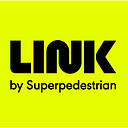Community Engagement Begins with Presence
A community relations (dist)urbanist focused on transportation equity weighs in
By Paul Mondesire
I’ve been walking, biking, and driving around the Bronx and all five boroughs of New York City since I was a kid growing up in the Gun Hill Projects and Co-op City in the 60s and 70s. What we’re seeing on our streets today is unlike anything that’s come before. E-scooters, e-bikes, “boosted” skateboards, bicycles, cargo bikes, adult tricycles, and one-wheeled contraptions have all joined cars, trucks, and buses, adding to the adventure of navigating our shared streets.
When COVID hit, we saw a 40% increase in car sales last summer that corresponded to a massive decrease in ridership on our buses and subways. At the same time, so many people bought new bicycles that there were none to be found in local bike shops. This is more than just a ripple in the Force, people are figuring out how to get around using alternate means of transportation.
The time has come for new transportation options, but safety, road rules, and rider etiquette must be addressed up front in a thoughtful and comprehensive way. That means getting out there on the streets to see what is happening in real time. When Superpedestrian — the company that developed LINK e-scooters for shared service — approached me last summer about engaging neighborhoods in meaningful discussions, I was happy to oblige.
Technology is wonderful but there is nothing more important than listening to people in any area where a company wishes to operate. LINK was PRESENT. For example, Paul Steely White, their Director of Development and Public Affairs, joined me at Gate 4 outside Yankee Stadium and engaged with local stakeholders representing the communities who are going to use their service — real people who will live with these new e-scooters in their midst.
This is a neighborhood with a significant business corridor, a diverse population, and new development in the nearby Bronx Terminal Market that would benefit from additional transportation options. There are similar stories in other neighborhoods across the boroughs included in the DOT’s 2021 Pilot Program. The LINK by Superpedestrian team expressed gratitude to the community leaders, business leaders, advocates, elected officials, and other stakeholders that took the time to teach them a bit about the needs of the people and businesses in their neighborhoods. That says something about the kind of company they will be if they are granted the privilege to provide service in New York City.
I’m a “Noo Yawkuh” who has ridden tens of thousands of miles on my bike across the entire city; I also owned a car here for many years. Given the state of our shared streets, LINK e-scooters provide Best in Class technological solutions, including on-board Geofencing to prevent riding in prohibited areas and a Vehicle Intelligence System that automatically takes a malfunctioning scooter out of service. That’s great! And still, the company knows that is not enough.
LINK held demonstrations in all five boroughs, showing what their e-scooters can do and learning about the wants and needs of real people in real neighborhoods who could really use help getting around in a safe, convenient, and cost effective manner. They hosted Zoom meetings on accessibility and safety that were extraordinarily valuable for the team and the community.
It is amazing what you can learn when people have a chance to ask basic questions like “How are you going to modify rider behavior?” or “Can you put license plates on LINK e-scooters so people can contact you when they see someone doing something wrong?” Accessibility advocates were especially helpful in letting the company know about the diverse challenges that these fellow travelers face every day and how solutions must be customized to meet their needs.
Safety and accessibility were at the top of LINK’s list, but parking and street clutter were other issues they noted. Clearly marked parking areas will be included on the LINK app along with photo verification, tip-over detection, and the ability to identify and punish reckless riders with fines, suspensions, or even outright bans from the platform.
Working together with the stakeholders in their expanding network will help LINK to develop the best strategies for seamlessly integrating into the diverse neighborhoods they would be serving.
I can hear the Bronx Boy in me chiming in with his two cents: “Promises, promises. That’s what they all say!” Such skepticism is based on direct experience that cannot be dismissed. It is up to the LINK by Superpedestrian team to walk the walk. There is no question that they have taken the appropriate first steps. If they get it right, New Yorkers trying to get around will reap the benefits.
